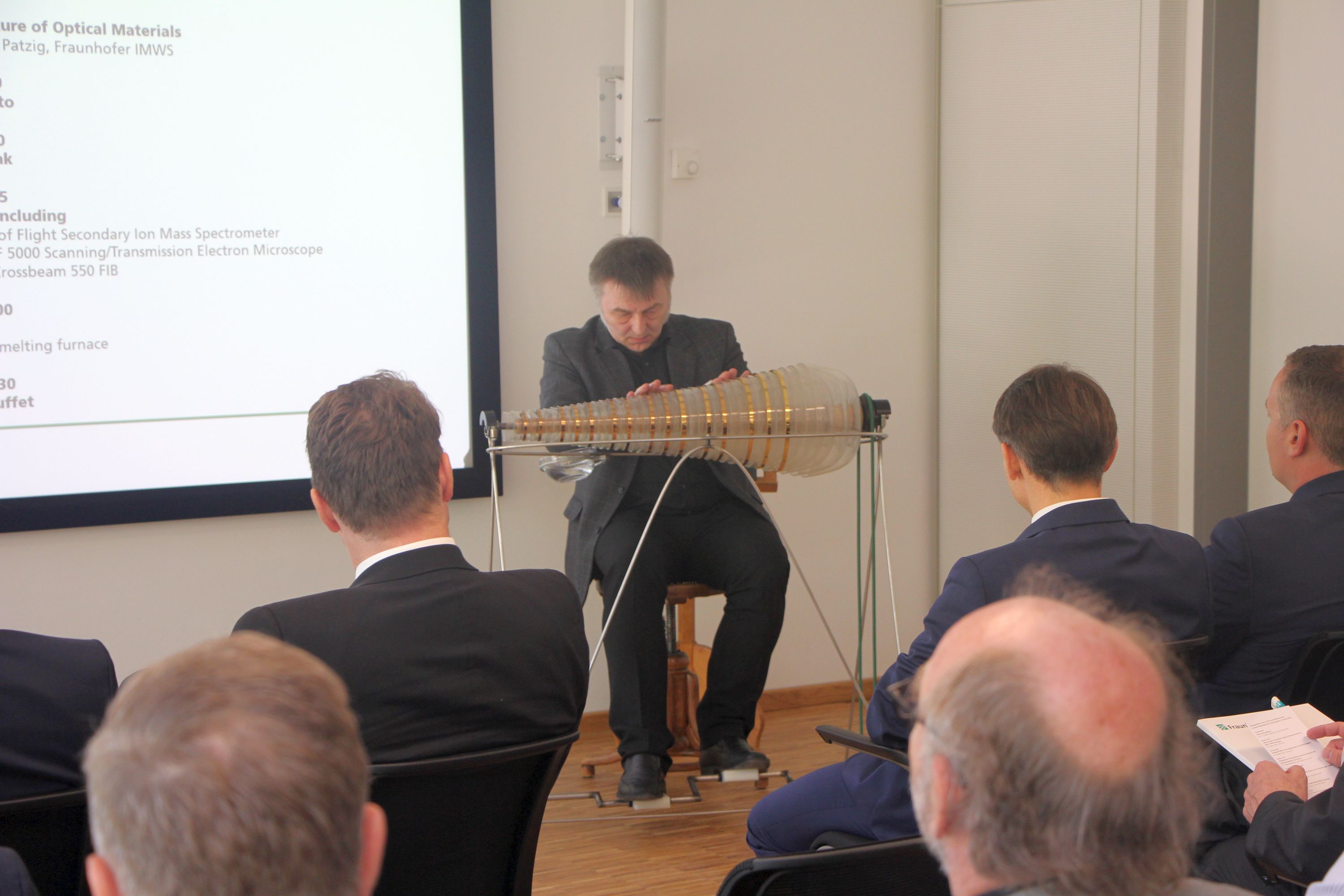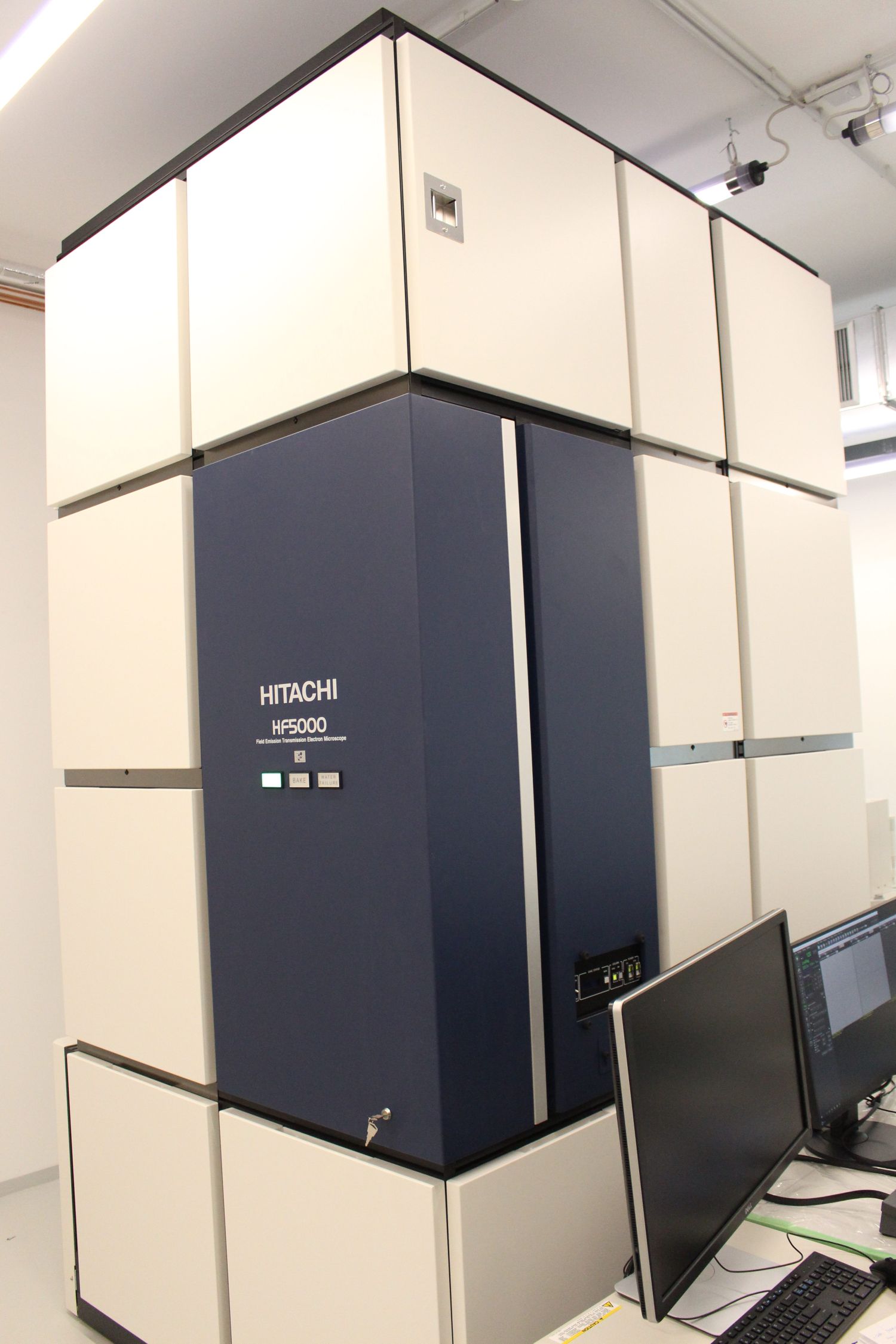The new line of business at Fraunhofer IMWS
Improved lenses, new laser-processing systems, tailored glass ceramics: With the new line of business ‘Optical Materials and Technologies’ , the Fraunhofer Institute for Microstructure of Materials and Systems IMWS is expanding its offerings. At an event to mark the opening, opportunities were presented that will arise in the future in microstructure diagnostics and microstructure-based material development for the optical industry, paint manufacturers, or producers of special machinery. New, largescale high-performance equipment will also contribute to this.


Whoever first thinks of drinking vessels or windows when they hear the word »glass« should give a listen to the music of Bruno Kliegl. The musician from Augsburg coaxed fantastic sounds out of the glass harmonica, which was invented in the 18th century, through the striking and rubbing of glass bowls, thereby showing us that glass can be heard.
His program went along ideally with the commemorative colloquium with which the Fraunhofer IMWS celebrated the beginning of the new line of business ‘Optical Materials and Technologies ‘, because, in the future, the employees of the institute want to show that much more can be gotten out of glass, just like ceramic or coating materials. “At the institute, we have been dealing with the analysis of effect pigments for 25 years and have developed lots of competence and ideas in this area. In the new line of business, we can transfer these to other areas. To explain it using an optical term ‘We are expanding our spectrum,’” explains Prof. Thomas Höche regarding the motivation for the expansion of the portfolio of the application-oriented material research in Halle (Saale). The physicist has worked at Fraunhofer IMWS since 2010 and is in charge of the new business area.
The special expertise of his team is in their know-how of the microstructure of materials. Based on procedures from nano- and surface analysis, knowledge can be obtained regarding the microstructure of glasses, glass ceramics, optical coatings, or effect pigments, which allows for an improvement to their characteristics. The experts at Fraunhofer IMWS consider the complete value-creation chain for companies, for example, from the optical industry, special machine construction, and the paint industry, from synthesis to processing and analytics, all the way to simulation. An additional emphasis is the development of laser-based material processing.
“In many classes of materials, not only do we offer our customers the sheer material characterization, but we open up new possibilities for material development through microstructure-based material design. In this way, we can make new properties of materials possible, reduce development times, improve resource efficiency, and, last but not least, increase the real net output ratio,” says Prof. Ralf B. Wehrspohn, Head of Fraunhofer IMWS, which, with the new division, now has more than 7 lines of business.
The symbol of the new fields of work is the expanded building of the institute, which has a large glass façade. It’s not only an eyecatcher, but a symbol of the questions being pursued: Like the pedestrians who are able to observe the activities of researchers, the current 17 employees of the ‘Optical Materials and Technologies’ business line take a close look at different materials – equipped with optimal work conditions and first-class equipment.
For the opening, new, largescale high-performance equipment was put into operation. This also includes the HITACHI HF 5000, which is the first scanning transmission electron microscope of this model type in Europe. In a lecture, Dr. Indrajit Dutta (Corning, Inc.) explained what kinds of opportunities the penetrating electron microscope offers for the analysis of glasses and glass ceramics. Dr. Sabine Hirth (BASF AG) presented the potential of the gas-cluster-ion time-of-flight secondary-ion-mass-spectroscopy for surface analysis, which is now also available at Fraunhofer IMWS. Dr. Grigore Moldovan (point electronic GmbH) took a look at the development of quantitative electron detectors for scanning electron microscopy and thereby at an additional technology that the new line of business will utilize. In addition, in Halle (Saale) there is now an induction melting plant with which property-adapted optical glasses and glass ceramics can be synthesized.
Employees of the new line of business have already proven how effective solutions can be that were developed from both LEAZitTM, a new kind of glass ceramic with little thermal expansion, and microPREPTM, a laser-based sample preparation device for microstructure diagnostics. The former was awarded the Hugo-Junkers-Award from the state of Saxony-Anhalt as the best project in applied research 2018, with the latter being honored with first place at the Innovation Awards 2018 from TÜV Süd. “We want to continue to develop these ideas and also open up new fields of application. I’m thinking of the particularly preparative and analytical challenges of hybrid systems in which organic materials are combined with inorganic materials,” says Höche. One thing is crystal clear: In the future, customers can expect just as much creativity and passion from him and his team as Bruno Kliegl demonstrates on his glass harmonica.